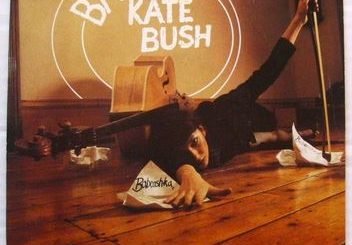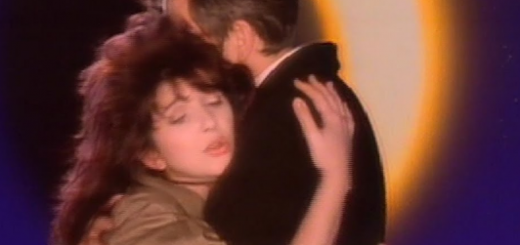The Dreaming by Kate Bush Lyrics Meaning – Unveiling the Layers of Socio-Political Commentary
Lyrics
On the bonnet of the van
(See the light ram through the gaps in the land)
Many an Aborigine’s mistaken for a tree
‘Til you near him on the motorway
And the tree begin to breathe
(See the light ram through the gaps in the land)
(Coming in with the golden light)
In the morning
(Coming in with the golden light)
Is the New Man
(Coming in with the golden light)
Is my dented van
(Woomera)
Dree-ee-ee-ee-ee
A-a-a-a-a
M-m-m-m-m
Ti-ti-ti-ti-ti
I-i-i-i-i
Me-me-me-me-me
Dree-ee-ee-ee-ee
A-a-a-a-a (woomera)
M-m-m-m-m
Ti-ti-ti-ti-ti
I-i-i-i-i
Me-me-me-me-me
Dree-ee-ee-ee-ee
A-a-a-a-a
M-m-m-m-m
Ti-ti-ti-ti-ti
The civilized keep alive
The territorial war
(See the light ram through the gaps in the land)
Erase the race that claim the place
And say we dig for ore
Or dangle devils in a bottle
And push them from the (pull of the bush)
(See the light ram through the gaps in the land)
You find them in the road
(See the light bounce off the rocks to the sand)
In the road
(Coming in with the golden light)
In the morning
(Coming in with the golden light)
With no warning
(Coming in with the golden light)
We bring in the rigging
(Dig, dig, dig, dig away)
Dree-ee-ee-ee-ee
A-a-a-a-a
M-m-m-m-m
Ti-ti-ti-ti-ti
I-i-i-i-i
Me-me-me-me-me
Dree-ee-ee-ee-ee
A-a-a-a-a (woomera)
M-m-m-m-m
Ti-ti-ti-ti-ti
I-i-i-i-i
Me-me-me-me-me
Dree-ee-ee-ee-ee
A-a-a-a-a
M-m-m-m-m
Ti-ti-ti-ti-ti (woomera)
I-i-i-i-i
Me-me-me-me-me
Dree-ee-ee-ee-ee
A-a-a-a-a
M-m-m-m-m
Ti-ti-ti-ti-ti
I-i-i-i-i (woomera)
Me-me-me-me-me
Ma-ma-many an Aborigine’s mistaken for a tree
(See the light ram through the gaps in the land)
You near him on the motorway
And the tree begin to breathe
Erase the race that claim the place
And say we dig for ore
(See the light ram through the gaps in the land)
Dangle devils in a bottle
And push them from the pull of the bush
(See the sun set in the hand of the man)
Bang, goes another kanga
On the bonnet of the van
(See the light bounce off the rocks to the sand)
You find them in the road
(See the light ram through the gaps in the land)
In the road
(See the light)
(Push ’em from the)
Pull of the Bush
(See the light bounce off the rocks to the sand)
(Push ’em from the)
Pull of the Bush
(See the sun set in the hand of the man)
(Oh, re Mikayina)
Kate Bush’s ‘The Dreaming’ is not just a song but a multifaceted cultural artifact that pierces through the veneer of the Australian landscape to expose its raw socio-political underbelly. Released in 1982, as part of the album of the same name, the song is a haunting and tumultuous odyssey into the heart of Australian colonialism and its impact on Indigenous populations.
Through a intricately woven tapestry of sound and surrealistic poetry, Bush delves deep into the tensions between modern development and traditional ways of life, merging the mystical with the mundane to create a soundscape that is as stimulating intellectually as it is emotionally. It’s a song that dares its listeners to engage with the uncomfortable truths of displacement, environmental destruction, and cultural erasure.
Breaking Down Colonial Echoes in Sound and Syntax
The frenetic pace and dissonance in ‘The Dreaming’ encapsulate the chaos of a clashing world. Bush approaches her subject with a sort of auditory cubism, piecing together fragments of real-world sounds and aboriginal chants to draw the listener into a confrontation with the unvarnished realities of postcolonial Australia. The song’s structure purposefully lacks harmony, reflecting the contentious history it describes.
Bush’s use of jarring sound effects and non-traditional instrumentation underpins the theme of ‘The Dreaming’: the violent overlay of one culture upon another. The cacophony serves as a metaphor for the destruction of Aboriginal land and life, while the simulated didgeridoo tones and rhythmic chanting pay homage to the indigenous cultures that are being silenced.
The Twisted Tale of ‘Bang, Goes Another Kanga’
These opening lines could hardly be more biting in their satirical portrayal of the casual violence against Australia’s native fauna and, by implication, its indigenous people. The ‘kanga’ on the van’s bonnet serves as a brutal metaphor for the country’s history of extermination and displacement against its Aboriginal population.
Furthermore, by personifying the ‘kanga’ in such a sudden and startling manner, Bush compels her audience to confront the violence head-on. The destructive act is not just a casual occurrence but is rather rendered in high relief against the day-to-day backdrop of an increasingly industrialized Australian society.
Unearthing the Hidden Meaning Behind ‘Erase the Race’
‘Erase the race that claim the place’, these lines underscore a darker, hidden meaning in ‘The Dreaming’. Bush points directly to the systematic erasure of Aboriginal people from Australian history and consciousness. The quest for mining wealth (‘dig for ore’) hints at environmental degradation, but also the deeper digging — into the core of a nation’s identity and the excision of an unwanted history.
The duality of Bush’s lyrics, filled with both landscape imagery and anthropomorphic references, blurs the lines between human and nature, indicating a profound connection between the treatment of the environment and the treatment of the people. This is perhaps the song’s most potent concealed message: the bond between land and culture, and the destructive consequences of severing that link.
The Contrast and Conflict of ‘See the Light’
Repeated throughout the song, the phrase ‘See the light’ works as a stark reminder of the contrast between knowledge and ignorance, enlightenment and denial. But whose light is it? It is suggested that the light could be that of modernity, which although appearing to illuminate, also blinds and distorts the view of what lies in the shadows – the cultures and truths that it is actively burying.
To ‘see the light’ might also imply a sense of realization or acknowledgment of the wrongdoing, but Bush leaves this ambiguous. She simultaneously paints an image of the land ravaged and pierced by colonization, with light forcing its way through ‘the gaps in the land’, unveiling both the physical and the cultural rifts that have been carved.
The Timeless Pull of ‘The Bush’: Setting Environmental Agendas
‘The Dreaming’ is more than just a reflection on historicized tensions; it’s a song that is eerily prescient in its environmental commentary. With climate change and environmental degradation at the forefront of global conversation today, Bush’s references to the destruction of native habitats rings with haunting accuracy. Her lyrics, resonant with the sound of a terrain battered by ‘rigging’ and industry, are a wakeup call to the damage wrought by mankind’s relentless resource extraction.
Kate Bush’s fervent plea in ‘The Dreaming’ for empathy and ecological preservation thus transcends its original context to become an anthem for the modern conservation movement. Its evocative lines continue to echo through the decades, a reminder of what is at stake when the ‘pull of the bush’— that deep, natural allure that once defined Australia — is pushed aside for progress.








